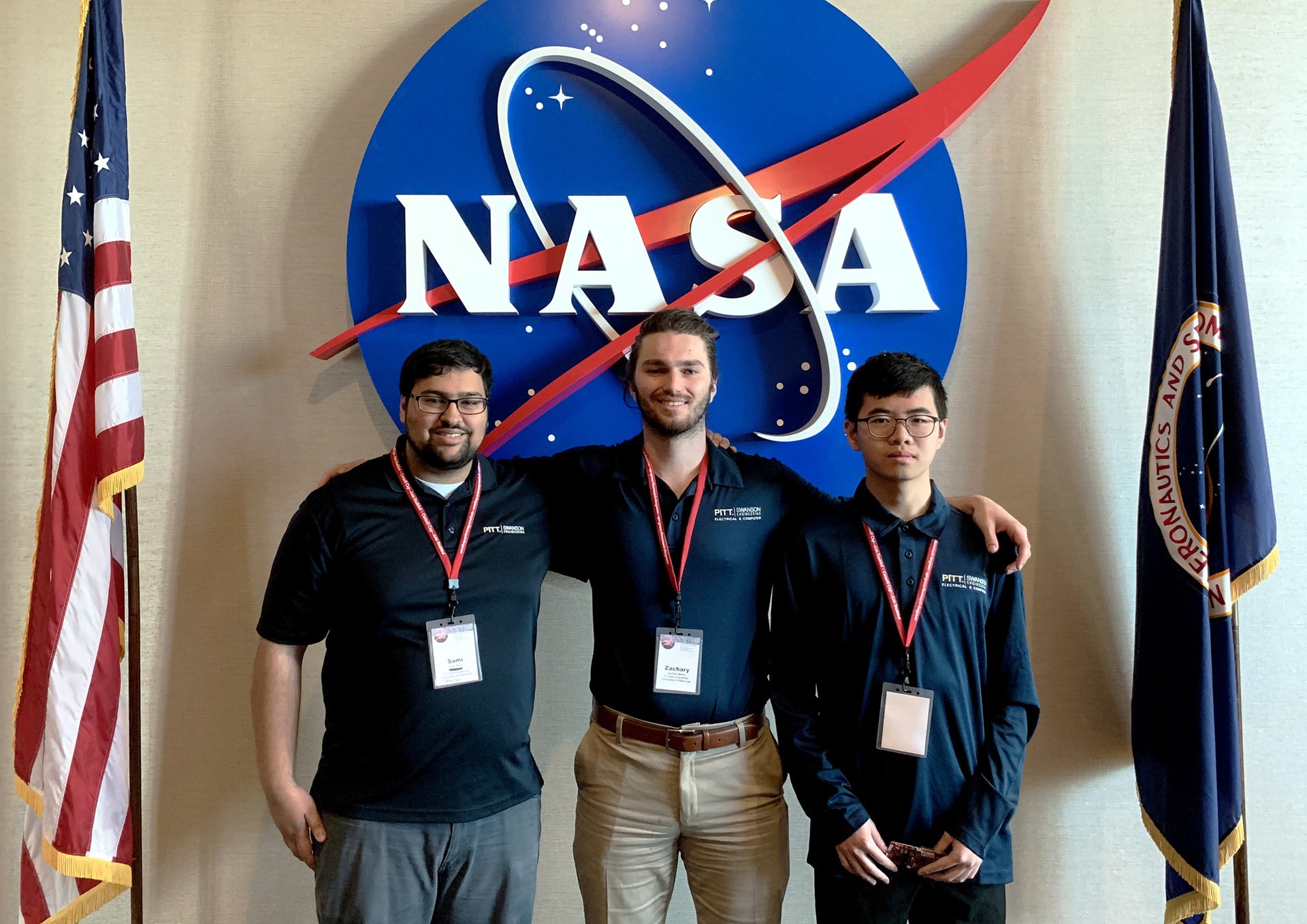Pitt Team Makes Finals in Cornell Cup
V2 Communications Was Among 12 North American Finalists Competing at NASA Kennedy Space Center
PITTSBURGH (June 11, 2019) — A team of students from the University of Pittsburgh’s Swanson School of Engineering competed as finalists in this year’s Cornell Cup – Arm Enabled with their project, V2 Communications, an inter-vehicle communication network.
The Cornell Cup – Arm Enabled is a design competition that invites engineering students to submit an invention or project featuring embedded technology. It offers finalists funding, access to expert reviews, and the opportunity to present their project at a two-day expo at the NASA Kennedy Space Center.
The team competed against 11 other finalist teams from Worcester Polytechnic Institute, University of California - Irvine, Purdue University, Boston University, University of Pennsylvania, Virginia Tech, and Drexel University from May 3-4.
The goal of V2 Communications is to develop an inter-vehicle communication network so that any cars with a Controller Area Network (CAN) bus system can share real-time driving data such as speed, acceleration, and engine status with other cars within 100 meters—information that may lead to fewer accidents and greater traffic throughput capacity on the road. The system includes security measures, ensuring it is resistant to packet injection and spoofing attacks.
The team consisted of Haihui Zhu, rising junior in electrical and computer engineering, and Zachary M. Mattis, who graduated this semester with a bachelor degree in computer engineering. The pair were interested in the concept of cars “talking” to one another on the road and decided to pursue the project last fall. Sami Mian, doctoral candidate, and Sam Dickerson, PhD, assistant professor and director of the Undergraduate Computer Engineering program, served as advisors for the team.
Now, the team will spend time researching the market and determining what’s next for V2 Communications.
“There are some technology companies already working on vehicle-to-vehicle communications. For example, Peloton Technology focuses on automated delivery and provides truck platooning,” Zhu explains. “One of the next steps is to do research on these companies and understand the market need. We also plan to improve our V2 solution with mmWave sensors and 5G beamforming.”
“This was a great opportunity for our students to think critically and apply the things they’ve learned in the classroom,” says Dr. Dickerson. “We’re proud of them for representing us well at the finals and look forward to seeing what the future has in store for V2 Communications.”
Contact: Paul Kovach

